The story (in Chinese) was first published in World View magazine
This English version was translated from the Chinese original with DeepL, with the manual correction of some obvious mistranslations. I apologize for any mistakes made by this AI translation tool.
When I was in Sarajevo, I stayed in a B&B in the hills on the outskirts of the city. When I drove there from out of town, I did not pass through the center of Sarajevo. So my first impression of the city was like the famous empty mirror in the movie “Walter defends Sarajevo”: the view down to the red roofs lining the hills, sandwiched between the verdant mountains. The clean white walls against the brilliant red tiles set the gentle tone of the picture; the minarets of the mosques, large and small, interspersed with them, form its tough skeleton.
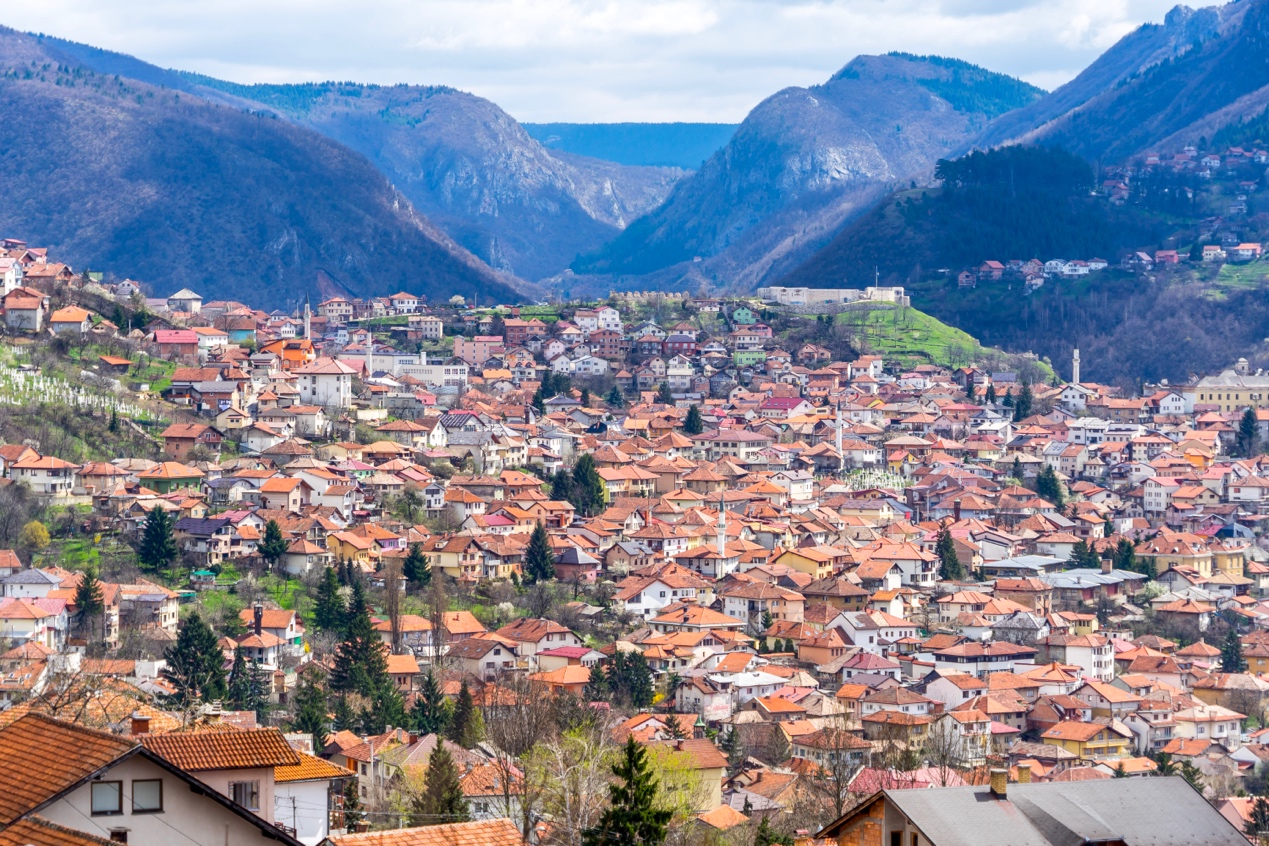
I headed down the hill towards the city, with narrow, steep inclines all the way. On both sides of the road towered the heavily European 19th century style buildings, which were depressing. The intricate floral decorations under the eaves were still there, but the walls around them had long since yellowed and peeled, like the wrinkled skin of an old man.
It’s not until I walk down the hill to the Miljacka river at the bottom of the valley that the city’s energy and charm come to the fore. The streets are bustling with people, the Renaissance-style buildings, and the trams are all old-school European charm.
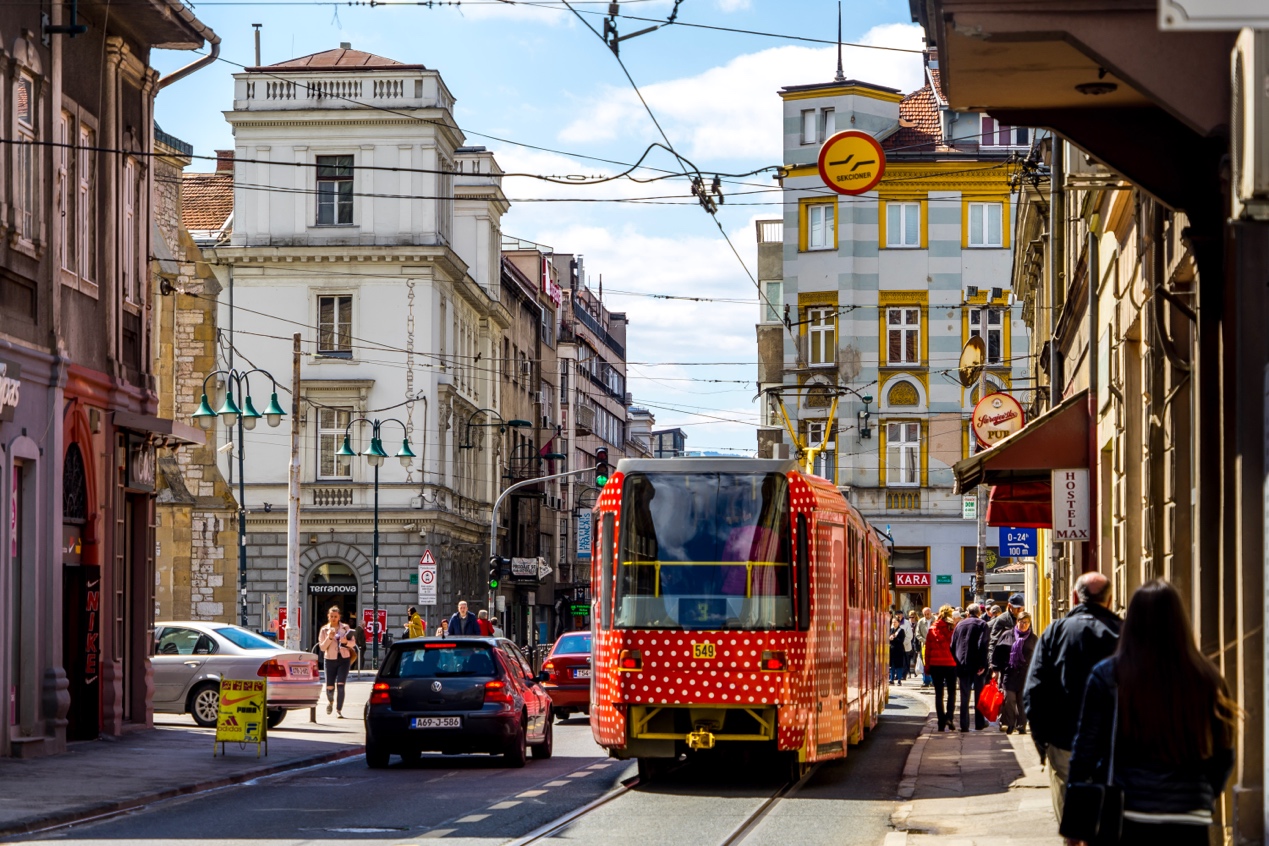
The old town of Baščaršija, just a block away, immediately transforms into a very rare Western Asian atmosphere in Europe. This is the oldest part of Sarajevo. The stone streets are lined with wooden shops, and vendors stand in front of them, tirelessly selling a variety of specialties and souvenirs to the camera-clad tourists.

Just as Rome was not built in a day, Sarajevo’s present unique appearance was not built in a day. The Slavs, the ancestors of the present-day Sarajevans, arrived in the 7th century AD, replacing the Illyrians who had settled here for more than 2,000 years, until in the 14th century the Ottoman Turks conquered the Western Balkans. For more than 400 years afterwards, Sarajevo remained the northwestern frontier of the vast empire that once spanned Europe and Asia. The conquerors converted the inhabitants with Islam and brought them a full Turkish lifestyle of mosques, bazaars, and public baths. They combined the Turkish word “palace (Saray)” with the Slavic ending “evo” for place name and called it “Sarajevo”, i.e. the city of palaces.

The wafting aroma of lamb leads me to a bakery off Old Town Road. Fresh from the pan, the burek resembles Chinese potstickers, golden in colour with an invitingly oily surface. From the Middle East and the Caucasus to the Balkans, this Turkish commoner’s delicacy was spread around the world as the Ottoman armies fought their battles. Under imperial rule, Sarajevo stretched along the narrow valley on either side of the river Mirjac, and the city today still retains the same pattern as it did then. Although the Ottoman rulers turned most of its inhabitants into Muslims, they also allowed different faiths to continue to exist. Mosques, Catholic churches, Orthodox churches and synagogues still stand shoulder to shoulder along the river.

By the 19th century, the aging Ottoman Empire was waning, and in 1878 the Austro-Hungarian Empire, with its eye on the north, occupied Bosnia and Herzegovina. In 1908, Austria-Hungary officially annexed Bosnia and Herzegovina (BiH) to its own territory, treating its neighbors as fellow citizens. Serbia was enraged. They dreamed of expelling Austro-Hungarian rule and incorporating the entire Western Balkans into “Greater Serbia”.
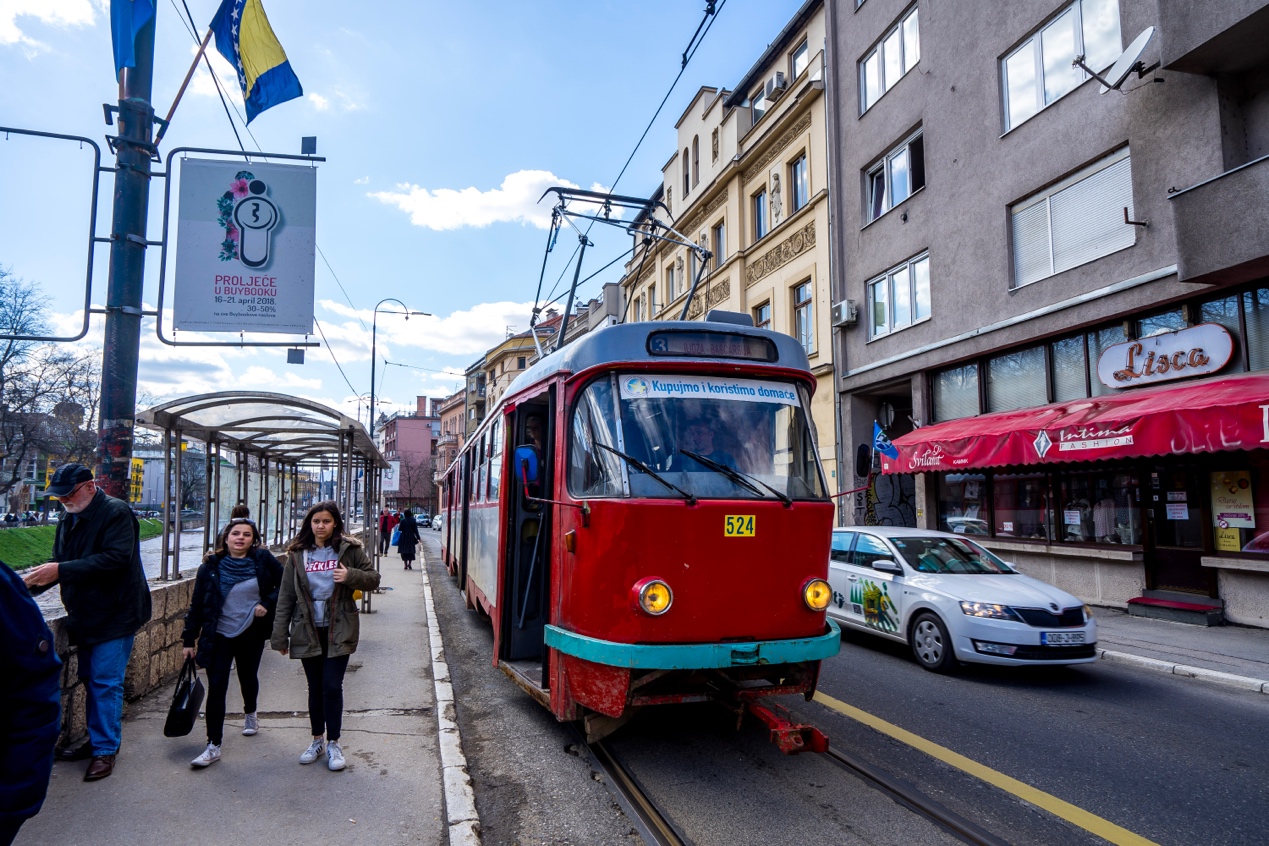
In 1914, Archduke Franz Ferdinand, Crown Prince of Austria-Hungary and Commander of the Imperial Army, traveled with his wife to Bosnia-Herzegovina to inspect military maneuvers and later to Sarajevo for a visit. Six assassins, armed with grenades and pistols, ambushed him on the route of his convoy into the city. The first two assassins did not find a suitable opportunity to attack, and it was only when the convoy passed the third assassin that he found an opportunity to throw a grenade. The grenade landed in the back of the car and exploded, injuring several attendants and some onlookers, but the Grand Duke and his wife were miraculously unharmed. The caravan accelerated, preventing the three other assassins who had been ambushed in front of them from attacking as well. The Archduke arrived at the town hall as planned and attended the welcome ceremony as usual.
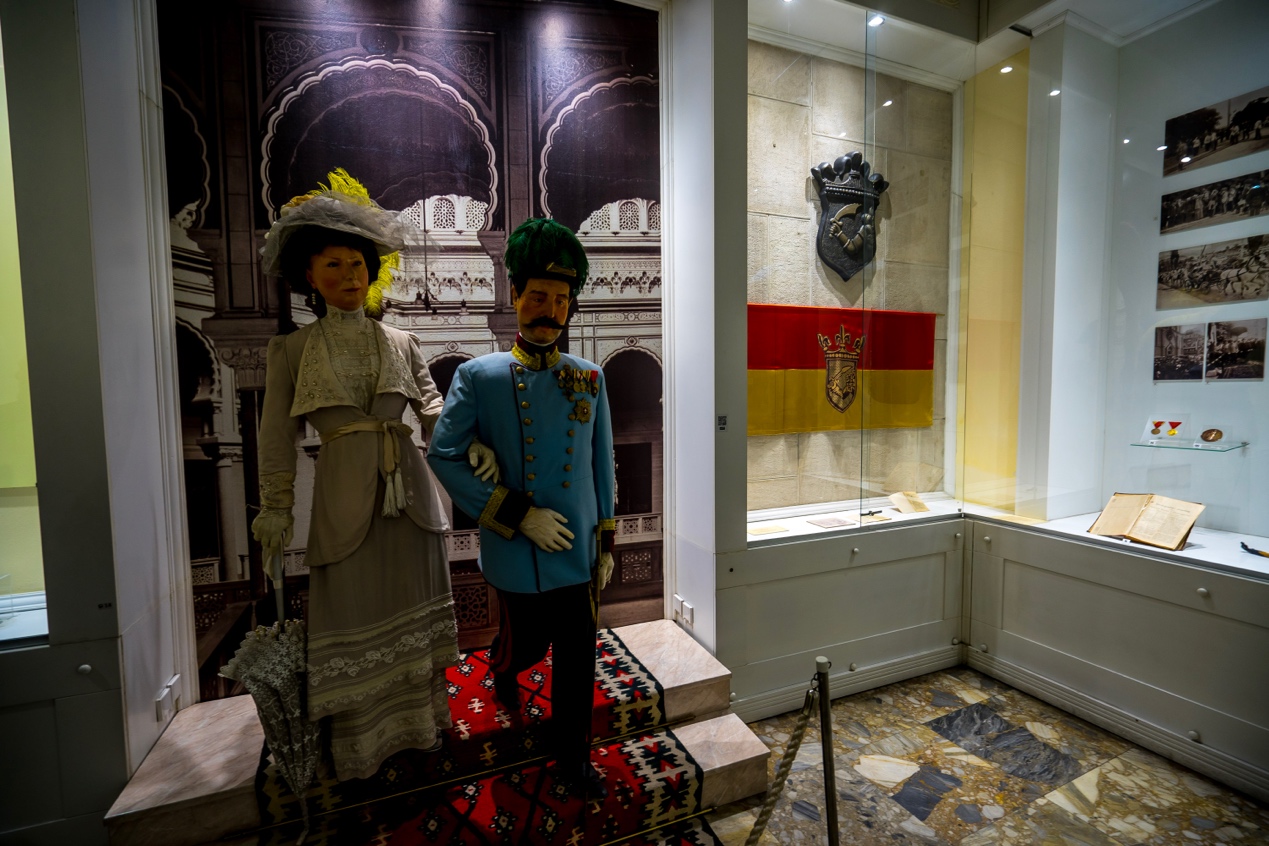
Afterwards, he decided to visit those injured in the explosion at the hospital, however, his entourage forgot to inform the driver. The driver continued his original route back: instead of turning left at the Latin Bridge to cross the river, he turned right and prepared to head towards the city. Only when they discovered this mistake did they stop the car and try to reverse back. At that moment, Gavrilo Princip, one of the assassins, happened to be right next to them. He quickly jumped on the pedal of the car and shot the Archduke and his wife twice, ending their lives. The Sarajevo Incident, which shocked the world, had taken place. A month later, Austria-Hungary officially declared war on the Kingdom of Serbia, and the German and Russian Empires, as well as Russia’s allies France and Great Britain, who were standing behind each other, also announced their entry into the war. The First World War broke out suddenly, and there was no peace in the already stormy old Europe.
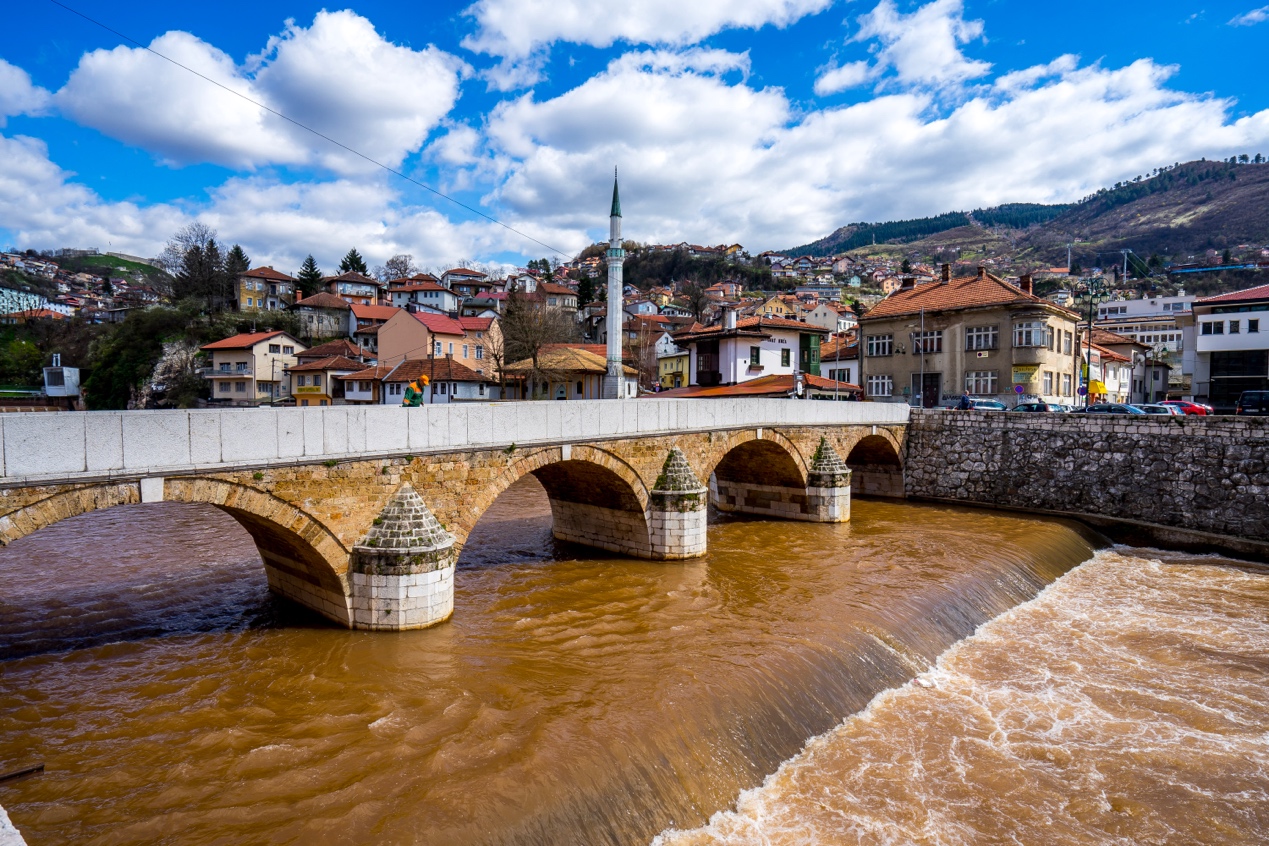
The struggle between the European powers should not have had much impact on China in the far East. But I was born in Qingdao – if not for the defeat of the Triple Alliance of which Germany was a member, the seizure of its interests in the Chinese colony of Jiaozhou Bay by Japan, and the subsequent outbreak of the May Fourth Movement, then the fate of my family and I, and of all the people of Qingdao, would have been completely rewritten. And it all started with this old stone bridge, which was stepped over by thousands of people every day.
At the end of World War I in 1918, the defeated Austro-Hungarian Empire fell apart. Its Slavic lands, now Croatia and most of Bosnia and Herzegovina, were annexed by the Slavic nationalists who ruled Serbia, and the Kingdom of Yugoslavia was formed. During World War II, Sarajevo was occupied by Nazi Germany, and the story of “Walther defends Sarajevo” is based on these years. After the war, the Socialist Federal Republic of Yugoslavia was established, and the long-time leader, Croat Tito, succeeded in suppressing the ambitions of Serbian nationalists. For almost half a century, Yugoslavs of different nationalities lived together on this land, and the near-perfect hosting of the Winter Olympics in Sarajevo in 1984 was a symbol of sorts, a testimony to the short-lived peace and communal harmony that Sarajevo enjoyed.
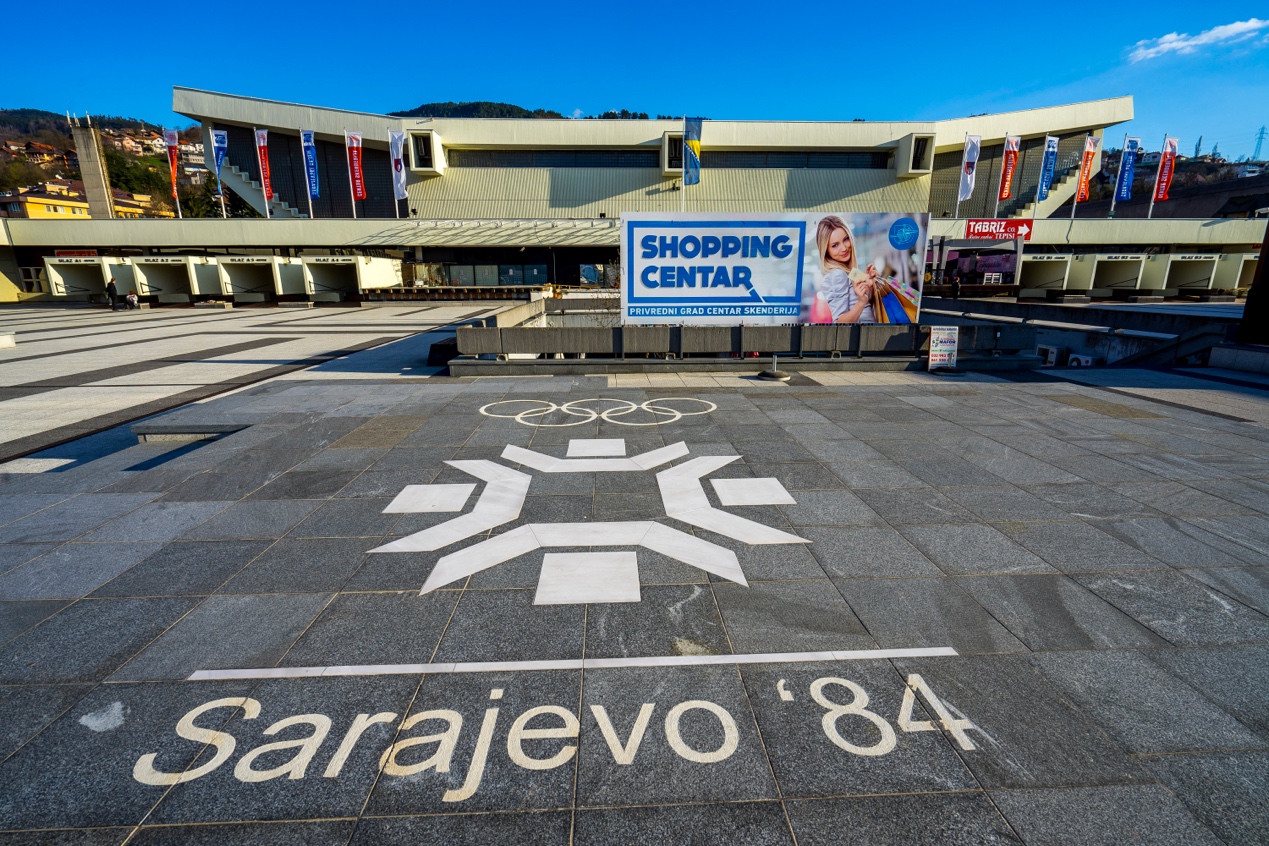
The seeds of inter-ethnic discord were already being sown, and the foundations of the Federation began to be loosened by the death of Tito in 1980, and the great changes in Eastern Europe in the late 1980s were the last straw that broke the twilight camel’s back. Unlike the other three predominantly mono-ethnic republics: Slovenia, Croatia and Macedonia, BiH was almost three-way between Muslims, Serbs and Croats. 6 April 1992 was the day when independent Bosnia and Herzegovina received international recognition. On the same day, however, the Yugoslav People’s Army, representing the Serbs, began shelling Sarajevo. The Serb army and militia quickly surrounded the city, cutting off the city’s water and electricity supplies and all access to the city, leaving more than 300,000 Sarajevo citizens in a cage with their lives in limbo.
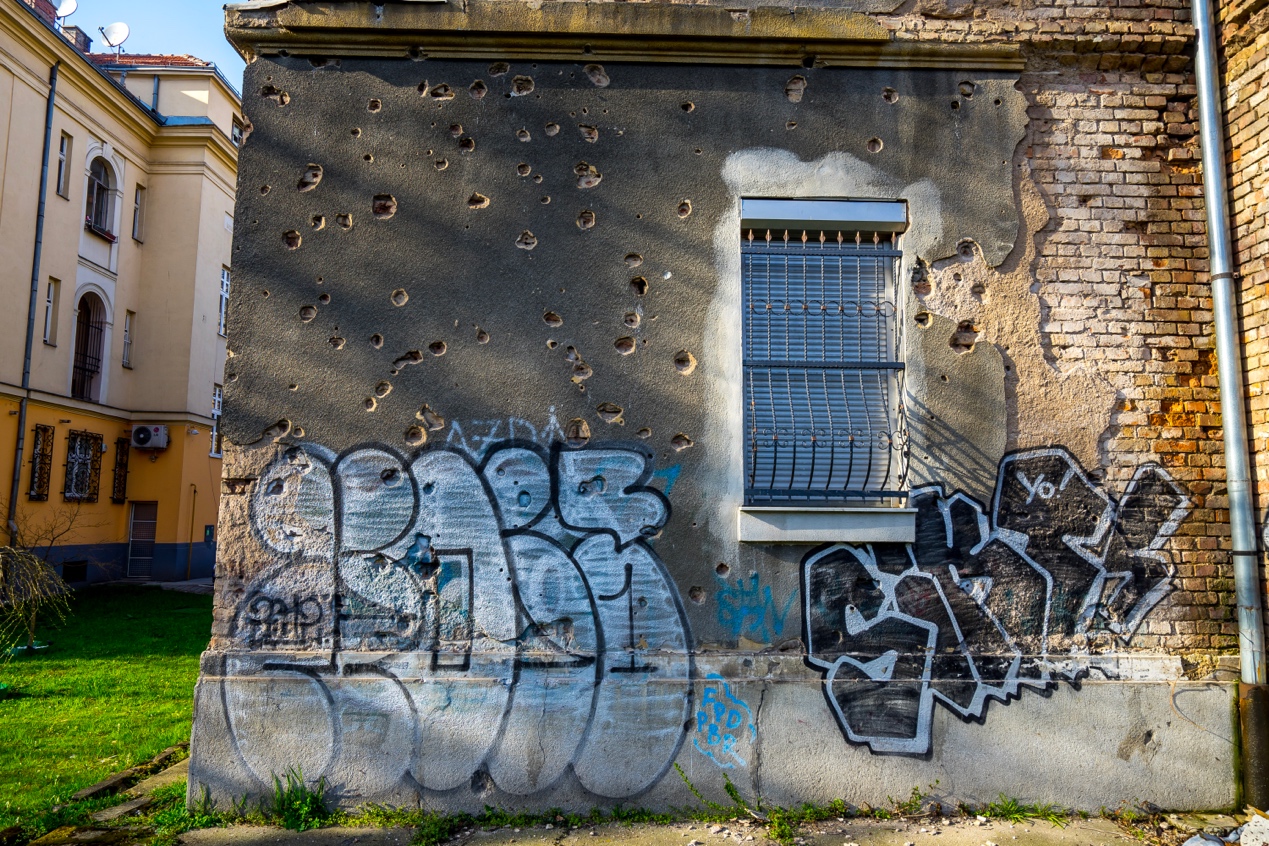
In order to survive, they have to queue daily for water on the banks of the Miliac River or go to the black market to buy the food they need at high prices. But snipers are everywhere in the city, making every trip out an adventure. The city’s main thoroughfare, Zmaja od Bosne, has become a notorious “sniper alley”, with unknown snipers lurking in the tall buildings on either side, firing at civilians trying to cross the street. Those who had to cross the street had to venture through the gunfire or hide behind the armoured vehicles of the UN peacekeeping forces. More than 200 people have died in this “alley of death” and more than 1,000 others have been injured as a result.
Nothing could be truer or more ironic about civilian life during this period than the sculpture of canned beef in the park. Most of the citizens’ food and medicine came from air drops from European and American planes, most of which was canned meat. The base of the sculpture reads, “The grateful citizens of Sarajevo salute the international community.” Yet the truth is like a dark humor: although the sculpture is a box of canned beef, many of the real cans contain pork. For a Muslim-majority city, this borders on humiliation. And many of the cans are even from American stockpiles from the Vietnam War, having been stored for more than 20 years, and tasting as good as you can imagine. A true or false story circulates locally: even the stray dogs on the streets refuse to eat the canned goods. “Dogs don’t even eat it”, but people have to eat it. How true the sadness of war is.
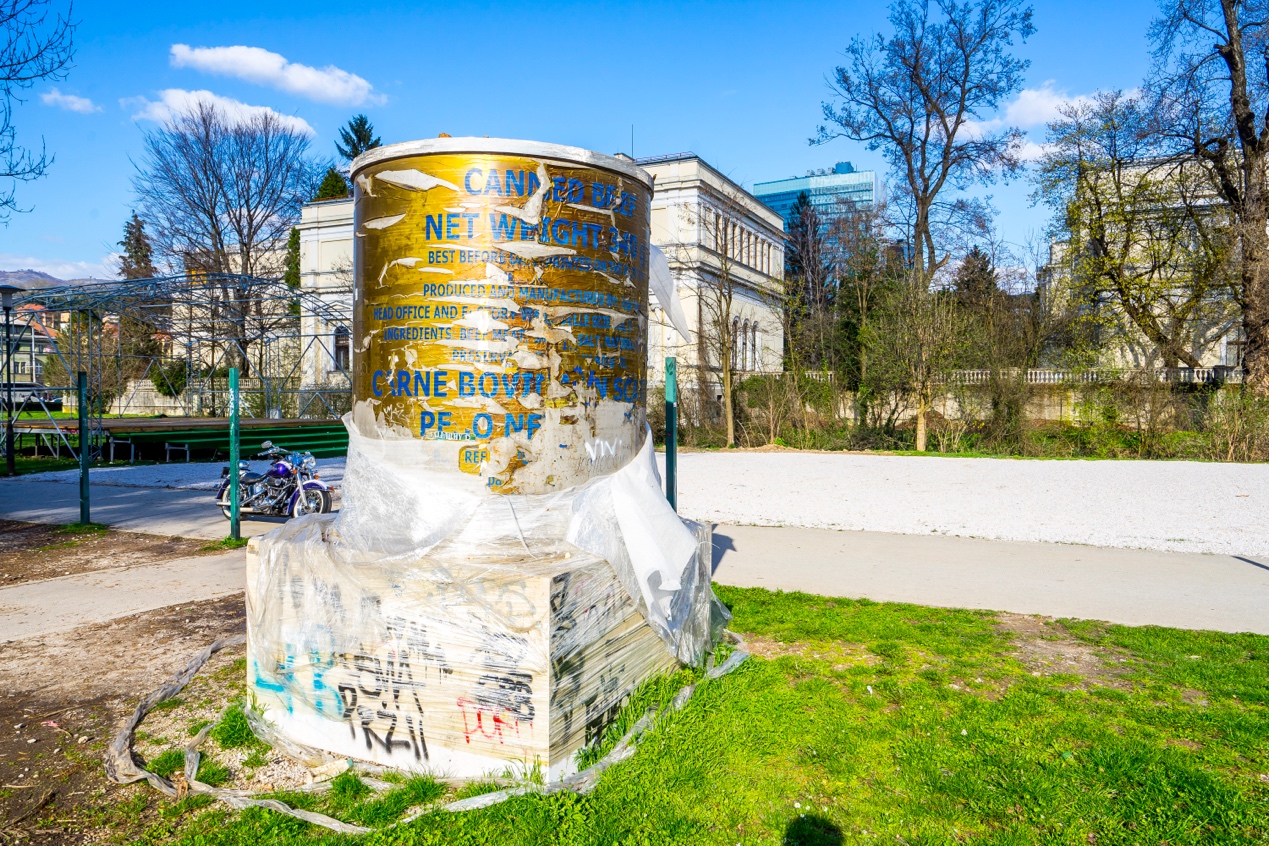
It was not so much a war between Serbs and Muslims as it was a battle between fanatical nationalists and peace-hungry civilians. In 1993, a young Serb man, Boško Brkić, and a young Muslim woman, Admira Ismić, the Sarajevo couple, decided to escape from the city under siege. They reached the Vrbanja bridge across the Mirjac River at 5 p.m. on 19 May, opposite the Serb-controlled area outside the siege.
The two men had previously agreed with the warring parties, through their respective connections, to a temporary ceasefire while they fled. However, just as they crossed the bridge, shots were fired from an unknown source and the two men fell to the ground. The boy died instantly, the girl struggled to crawl towards her boyfriend, and the two eventually embraced each other, frozen in time. The harrowing images were captured on camera by a Reuters reporter and caused a worldwide sensation. The two were dubbed the “Romeo and Juliet of Sarajevo”. The famous Hong Kong Chinese lyricist Lam Chun Keung, who wrote a song of the same name for singer Sammi Cheng, sang, “On the chaotic earth / Fighting to divide every nation / He and she have never changed their position / Forever sharing a brave ideal ……”
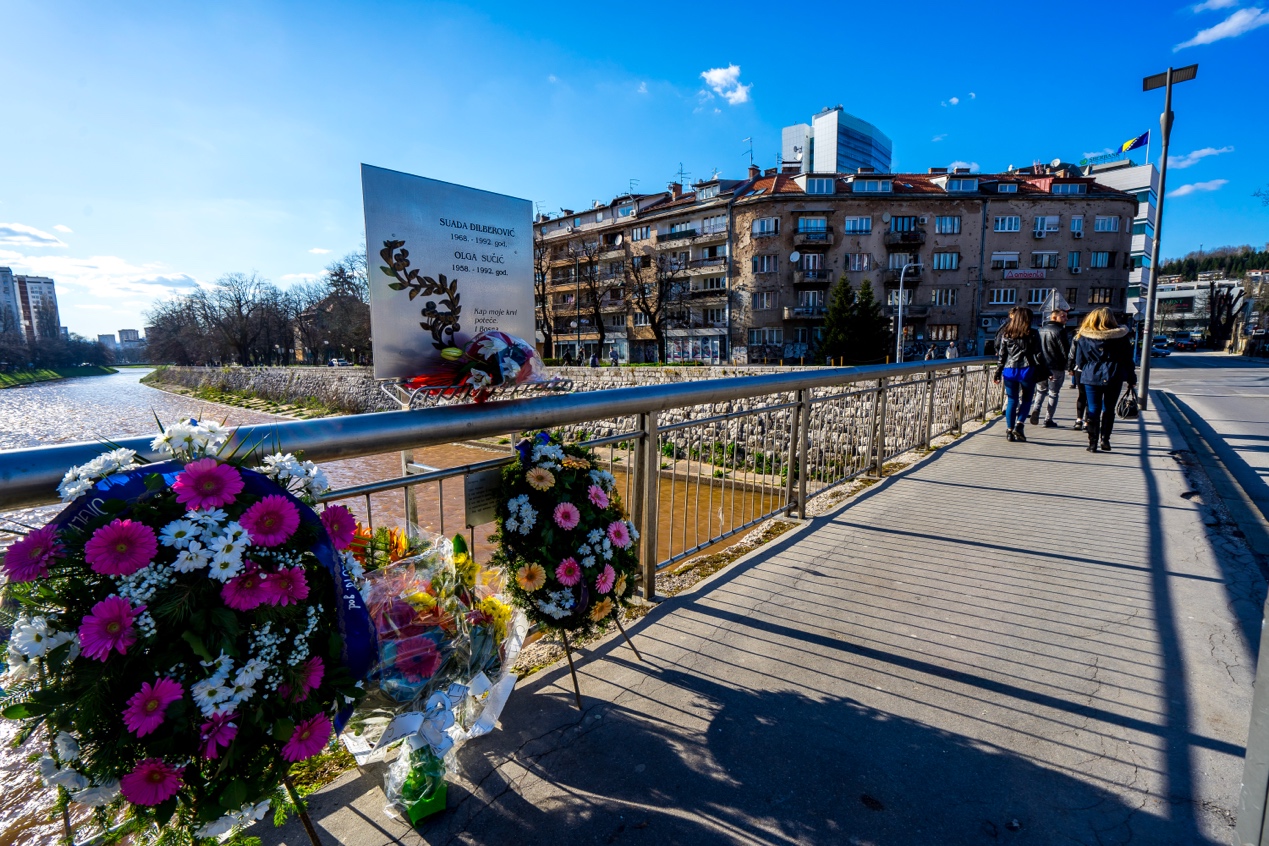
As I walk across the present-day Vrbania Bridge, with its constant flow of pedestrians, all shadows of the war seem to have faded. But the story of this plain concrete bridge is much more than just “Romeo and Juliet”. In the centre of the bridge stands a memorial to two anti-war protesters who were shot dead on the bridge in 1992: Soda Tiborzevich, a university student, and Olga Sočecki, a mother of two, both of whom were among the first casualties of the war. On the north side of the bridge, the buildings that survived the war still remain (and are even still inhabited). Even though it has been completely renovated, the craters from the gunfire are still clearly visible on its facade, as dense as the stars in the sky, making you shudder.
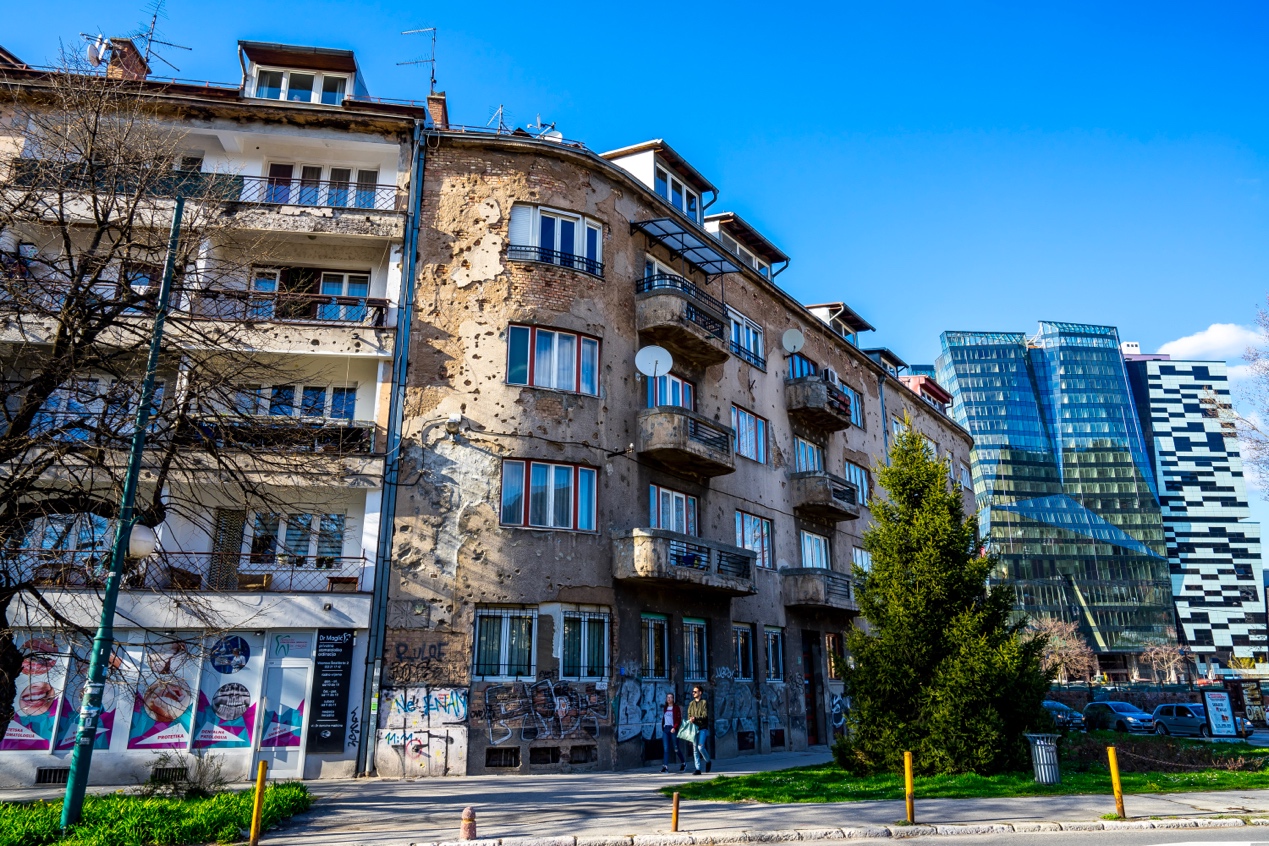
Throughout Sarajevo, in addition to the bullet holes left in the buildings, the bright red marks known as “Sarajevo roses” can be seen on the ground from time to time. They are painted in the depressions of the concrete floor, irregular spatter shapes that look like bloody scars. The depressions were not deliberately made, but originated from mortar shell explosions during the siege of the city. Each of the 200 “scars” spread throughout the city means that innocent civilians were killed there.

Nowhere is the siege that Sarajevo experienced more shocking than in the tunnel that runs through the runway of Sarajevo airport. At that time, the Serb army closed in on the entire city, leaving only a gap at the airport. There, the besieged city of Sarajevo was separated from the outside world by only the airport runway from the area controlled by the government forces of Bosnia and Herzegovina. Yet as the site of a UN mission, the airport was a neutral zone at the time, inaccessible to both sides. Thus began an unprecedented rescue operation: from March 1993, military and civilian personnel, both inside and outside Sarajevo, spent four months digging a tunnel over 800 meters long (340 meters of which was under the airport runway) with their bare hands, 24 hours a day, using rudimentary tools. Sarajevo, which had been under heavy siege for more than a year, was no longer an island.
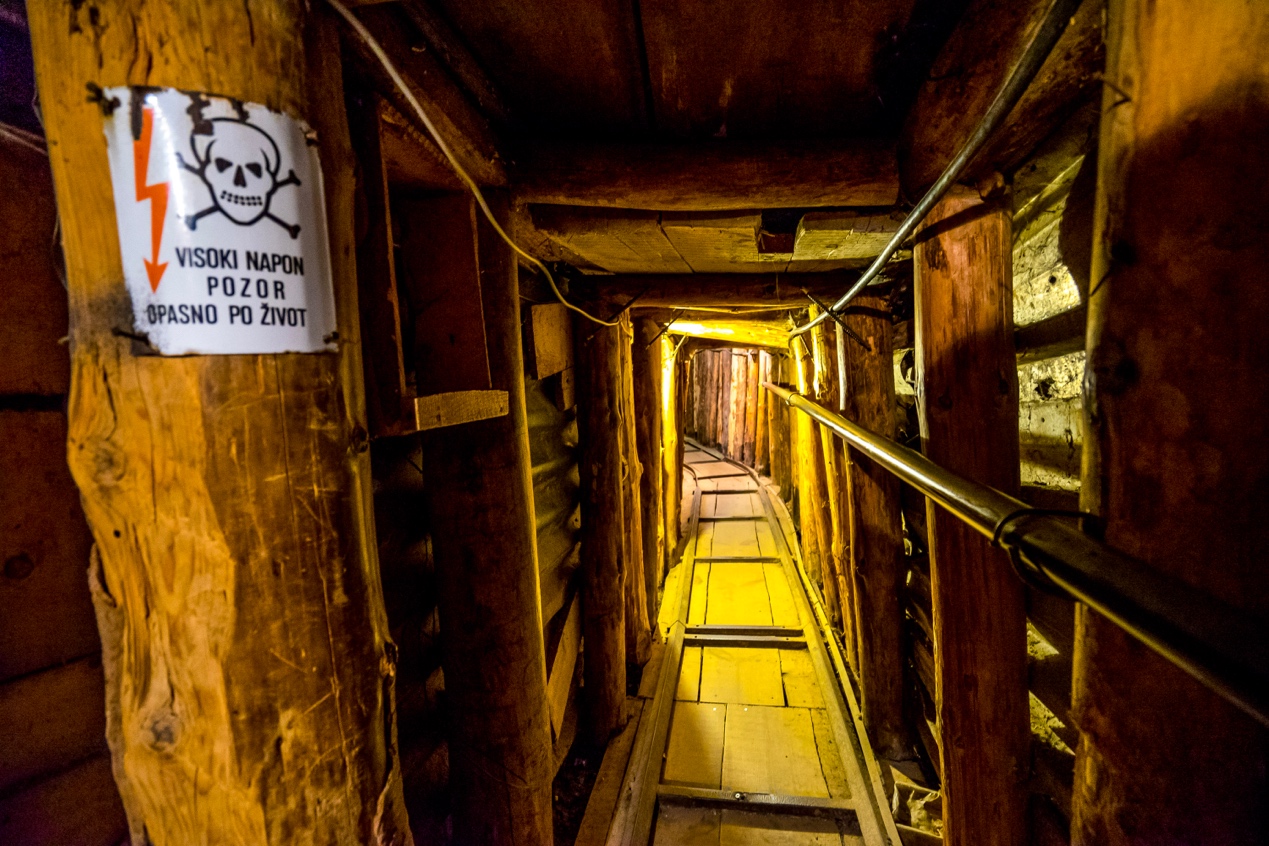
Today the northern exit of the tunnel, the side that leads into the city of Sarajevo, has been set up as a museum to showcase this particular piece of history, and even a small section of the tunnel has been reserved for visitors to experience. I entered the cramped tunnel, which was only 0.8 meters wide and 1.6 meters high, supported by rudimentary wooden bars, and immediately felt a sense of breathlessness and oppression. After walking forward only a few meters, I immediately retreated. Yet every day in Sarajevo during the siege, thousands of people, spending two hours, huddled in line to pass through it. They were either civilians eager to escape the battlefield or fighters sent to support the city. With no ventilation system, the air in the tunnels was perpetually foul and foul-smelling; and the standing water that the travellers had to wade through was often waist-deep due to the constant seepage of groundwater. In these harsh conditions, the citizens of Sarajevo rely on a steady flow of supplies, from petrol to cigarettes, brought into the city by handcart. Without this “tunnel of life”, I think the siege of Sarajevo would not have ended in a victory for the people. The only sad thing is that “Romeo and Juliet” died only a month or so before the tunnel was opened. If it had been opened a little earlier, they would not have ventured through the heavily blockaded siege, let alone lost their lives.
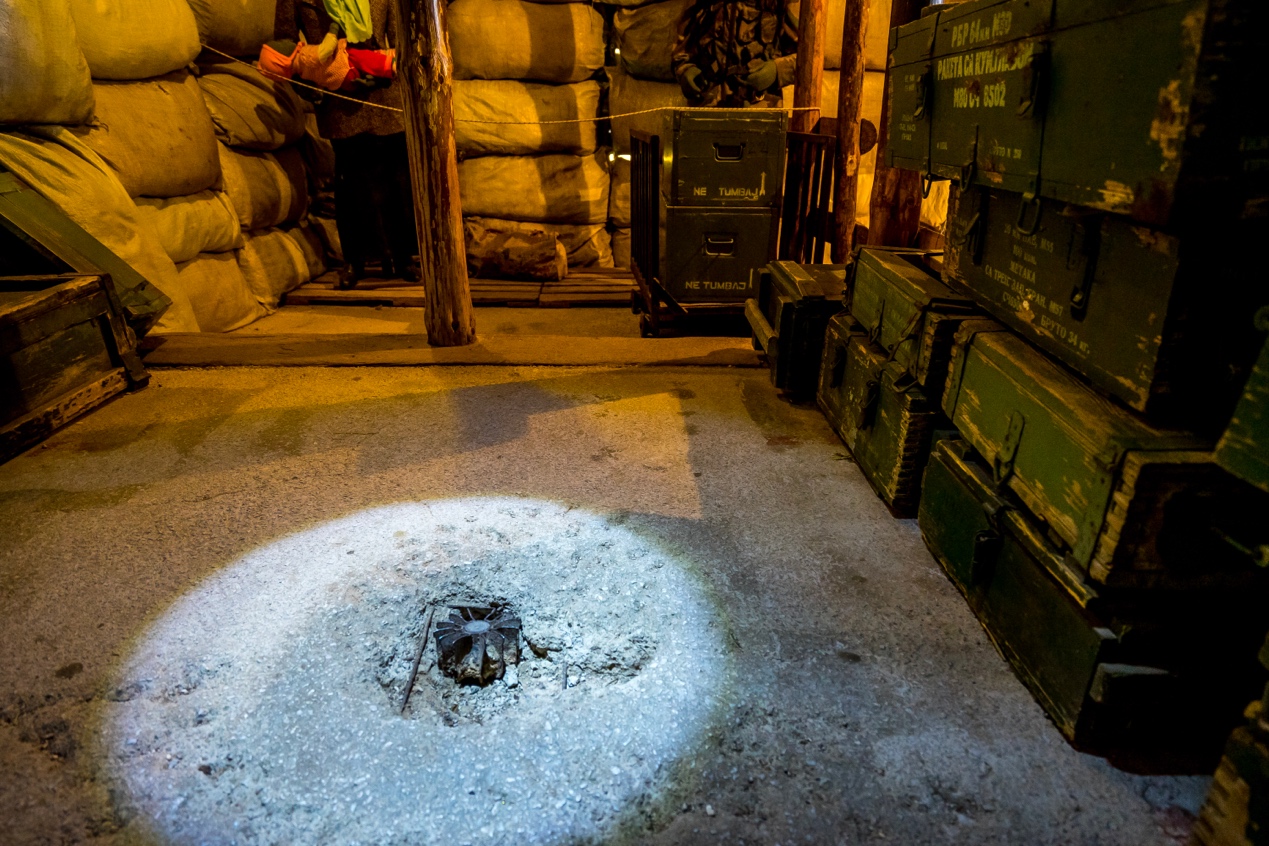
The 1996 Dalton Accords brought an end to the civil war in Bosnia and Herzegovina and to the siege of Sarajevo, which had lasted nearly four years. The citizens of Sarajevo did not anticipate that the harsh siege would last so long, making it the longest in the history of modern warfare. After the war, although Bosnia and Herzegovina remained a unified country, it was divided into two non-subordinate entities: the Muslim and Croat-dominated Federation of Bosnia and Herzegovina, and the Serb-dominated Republika Srpska. The borders between the two entities are intertwined, mostly stemming from the territory actually controlled at the end of the civil war. Thus, not far from the Tunnel Museum is the area belonging to the Republika Srpska.
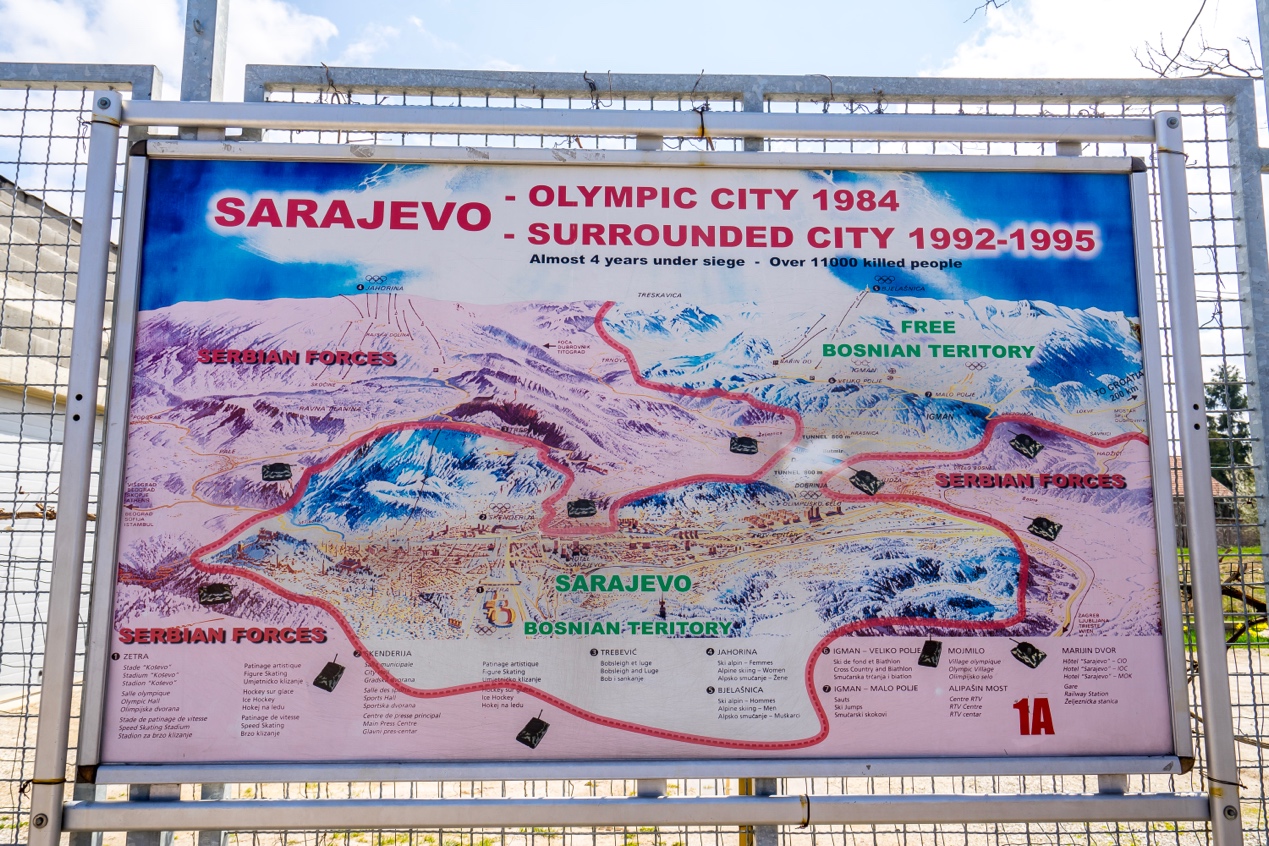
I drove across the border on the map, with no markers on either side of the road, and no differences even in architectural style. But this “invisible line” is a real area that separates Sarajevo’s diverse ethnic populations. Before the war, they lived next to each other in this open and tolerant city, and some even fought side by side in the civil war. Yet today, almost 30 years after the war, the suspicion and hatred between the three ethnic groups as a result of the civil war has not been completely eliminated. Although any BiH person is free to choose their place of residence, almost all Serb residents moved to the area of the Republika Srpska, and most of the Muslim community in the Republika Srpska also moved away. The city that was once one whole has long since split invisibly into two parts.
On the map of Bosnia and Herzegovina, Sarajevo sits almost firmly in its center. However, if you look at the border between the two entities, Sarajevo can be considered the “frontier of frontiers”. The artificially drawn border is like a scar that stretches for thousands of kilometers across the weathered land of Bosnia and Herzegovina.
“Look, this city, he – is Walter.”
This classic line, which almost everyone in the old generation of Chinese could recite at the end of the film “Walter defends Sarajevo”, has undoubtedly acquired a deeper meaning after the city has experienced more suffering and pain.

